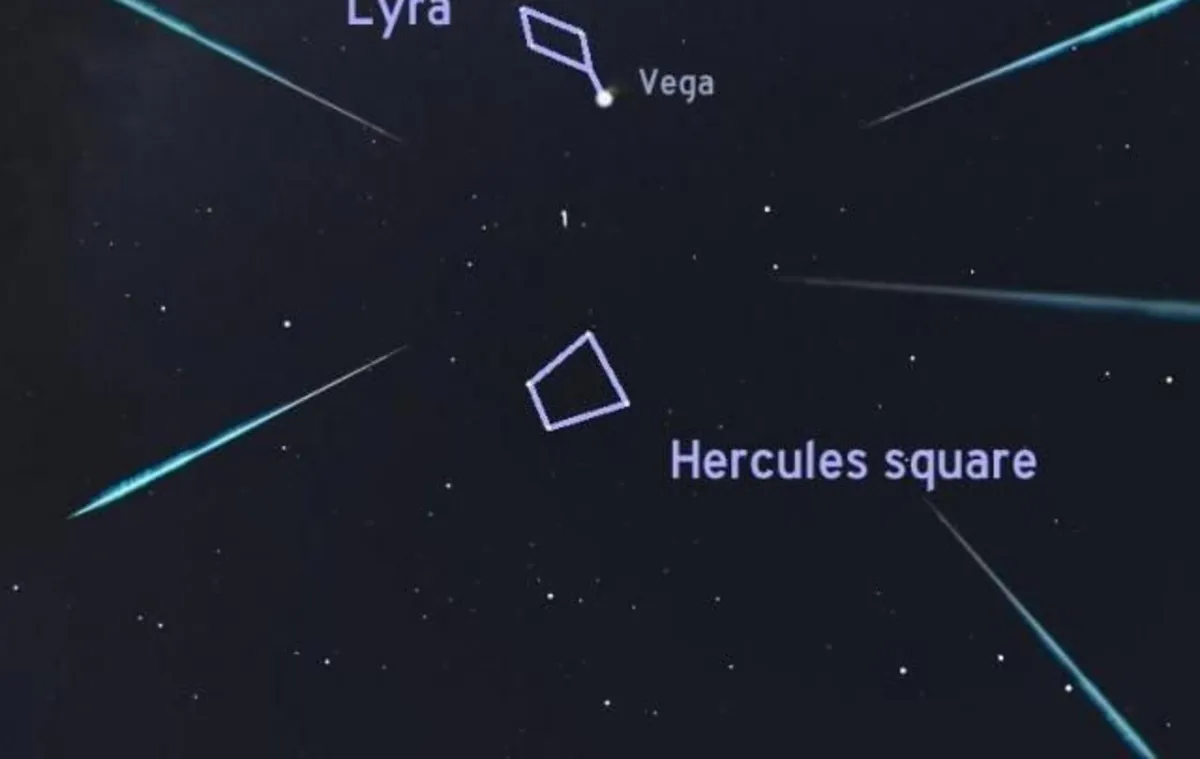
The Lyrid meteor shower peaks early this week, beginning Sunday evening and continuing for three nights. Astronomers predict that the best viewing conditions will occur around early Tuesday morning. This annual event is not only one of the oldest known meteor showers, with recorded sightings dating back to 687 BCE, but it also offers a spectacular opportunity for stargazers to witness nature’s brilliance.
The meteors we observe during the Lyrid meteor shower originate from the debris left behind by Comet C/1861 G1 (Thatcher). This comet passes through our part of the solar system every few hundred years, shedding tiny particles along its path. As Earth moves through this trail of dust and rock, particles approximately the size of a grain of rice or a pea enter our atmosphere at speeds of around 29 miles per second. The friction generated by this rapid entry causes these particles to heat up and emit bright flashes of light, which we see as meteors. Known for their speed and brightness, the Lyrids typically do not leave trails behind, but they can occasionally produce impressive fireballs—larger fragments that burn even more brightly in the night sky.
According to the American Meteor Society (AMS), this year’s Lyrid meteor shower will peak around sunrise on Tuesday, April 23. However, you can start observing as early as Sunday night after 9 p.m., when the sky becomes fully dark. To locate the radiant point, where the meteors appear to emerge from, look towards the bright star Vega, situated at the bottom of the small, harp-shaped constellation Lyra in the eastern sky. The radiant is positioned between Lyra and the square of stars below it, which belongs to the constellation Hercules.
It is important to note that mostly cloudy skies are expected on Sunday and Monday nights, which may hinder visibility for fainter meteors. Therefore, finding a clear view of the sky is crucial for an optimal viewing experience.
The best time to catch the most meteors is in the hours leading up to sunrise, as Earth turns into the dust stream left by the comet. If early mornings aren’t your thing, you can still enjoy the Lyrids on Sunday, Monday, or Tuesday nights. Here are a few tips to enhance your viewing experience:
Look towards the darkest part of your sky; meteors can appear anywhere. Allow your eyes 10-15 minutes to adjust to the darkness. Keep your phone inside, as the light can reset your night vision. Seek a dark location away from city lights for the best results.While predictions suggest that observers might see 15 to 20 meteors per hour, the American Meteor Society lists the Lyrids as having a Zenith Hourly Rate (ZHR) of 18. However, it’s essential to temper expectations, as this ZHR is a theoretical figure based on ideal conditions—complete darkness, no cloud cover, and the radiant directly overhead. In reality, single-digit meteor counts per hour are more likely for most viewers.
On Monday night, watch for the Chinese space station Tiangong to rise in the west at 8:34 p.m. Although Tiangong is smaller than the ISS, it will brighten as it moves into the southern sky three minutes later. On Tuesday night, you might also catch a glimpse of the Hubble Space Telescope as it passes from left to right low in the southern sky starting at 8:32 p.m., reaching its brightest point around 8:35 p.m. as it crosses over central Florida.
As you venture outside to watch for meteors, don’t forget to keep an eye out for these additional skywatching delights!